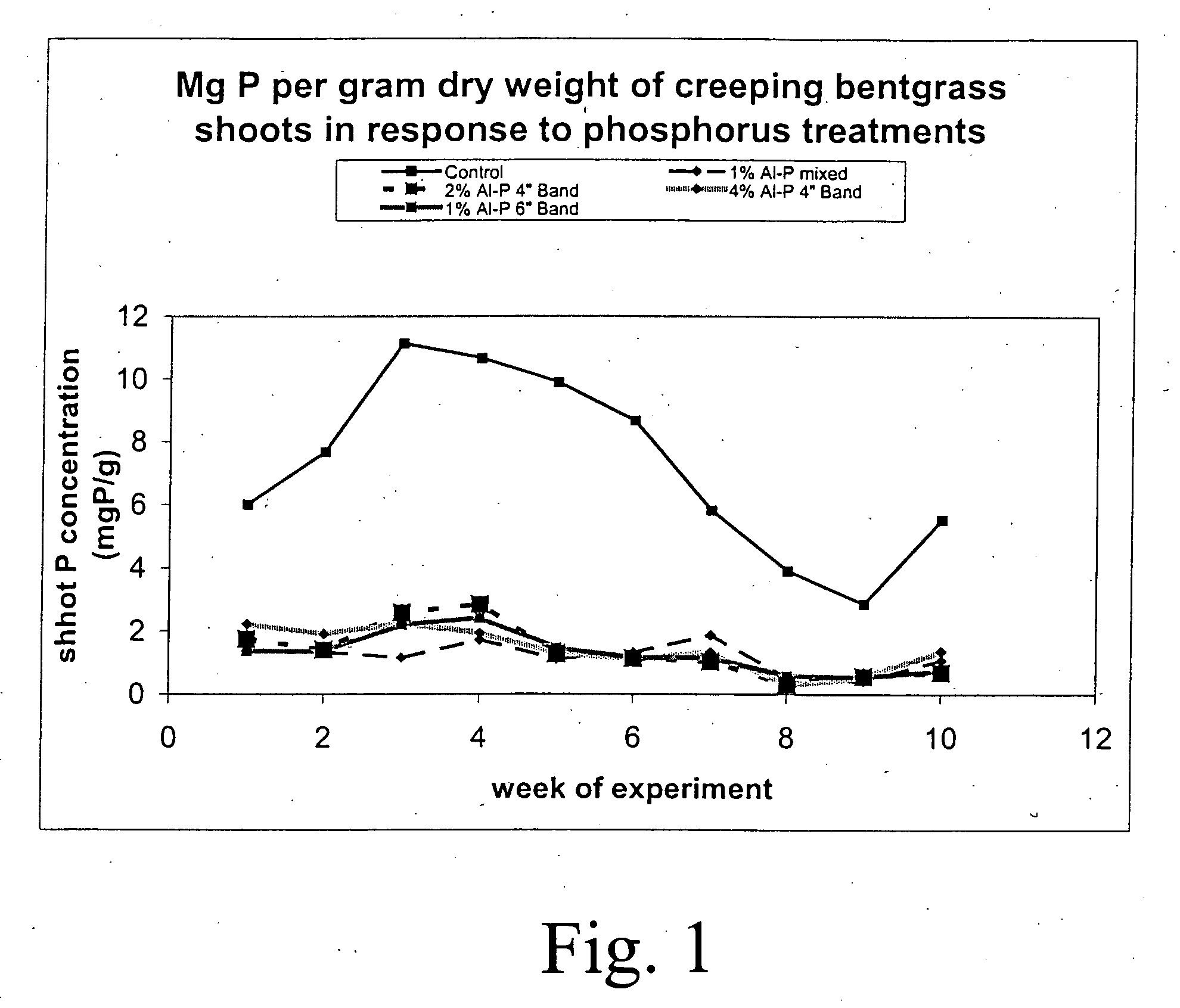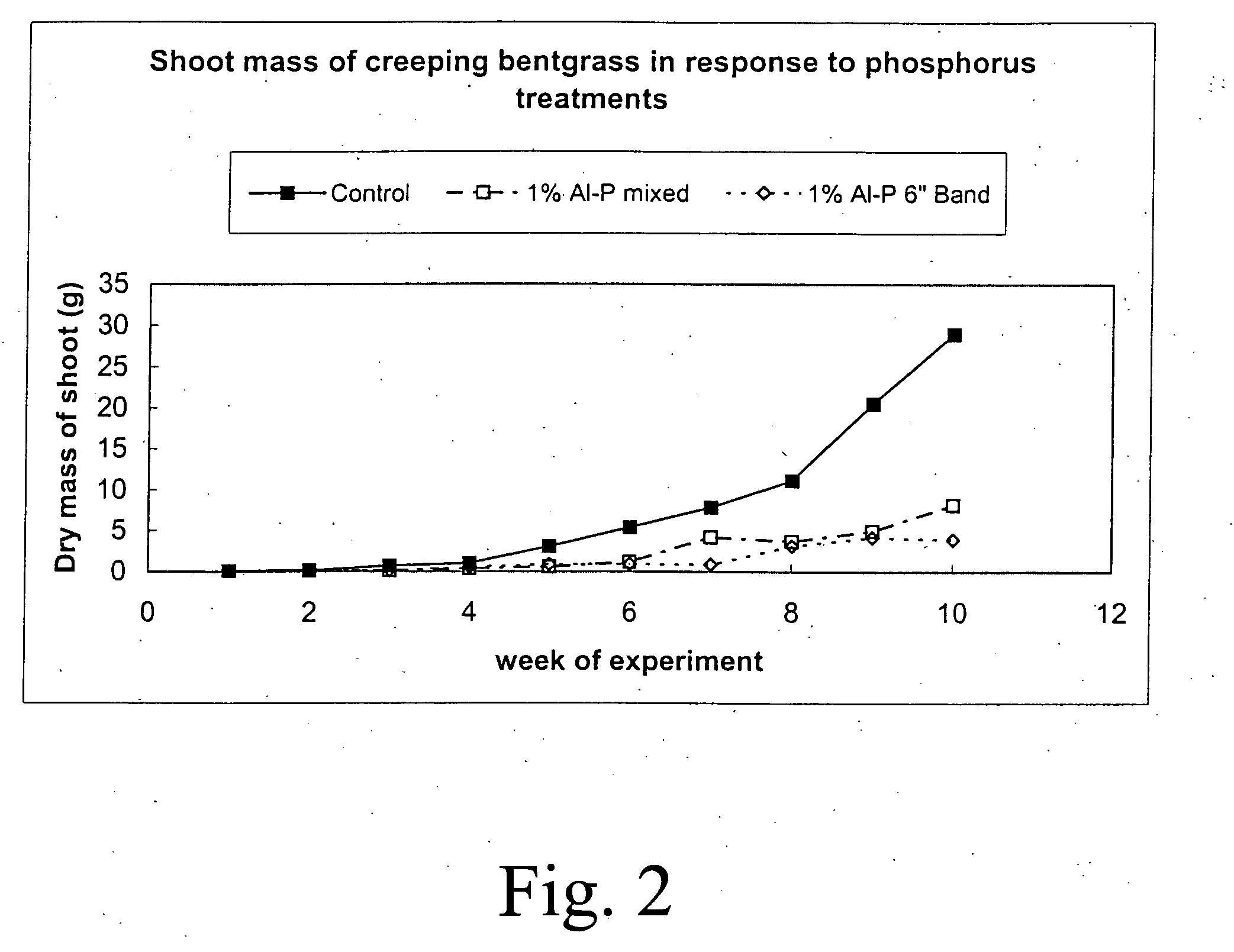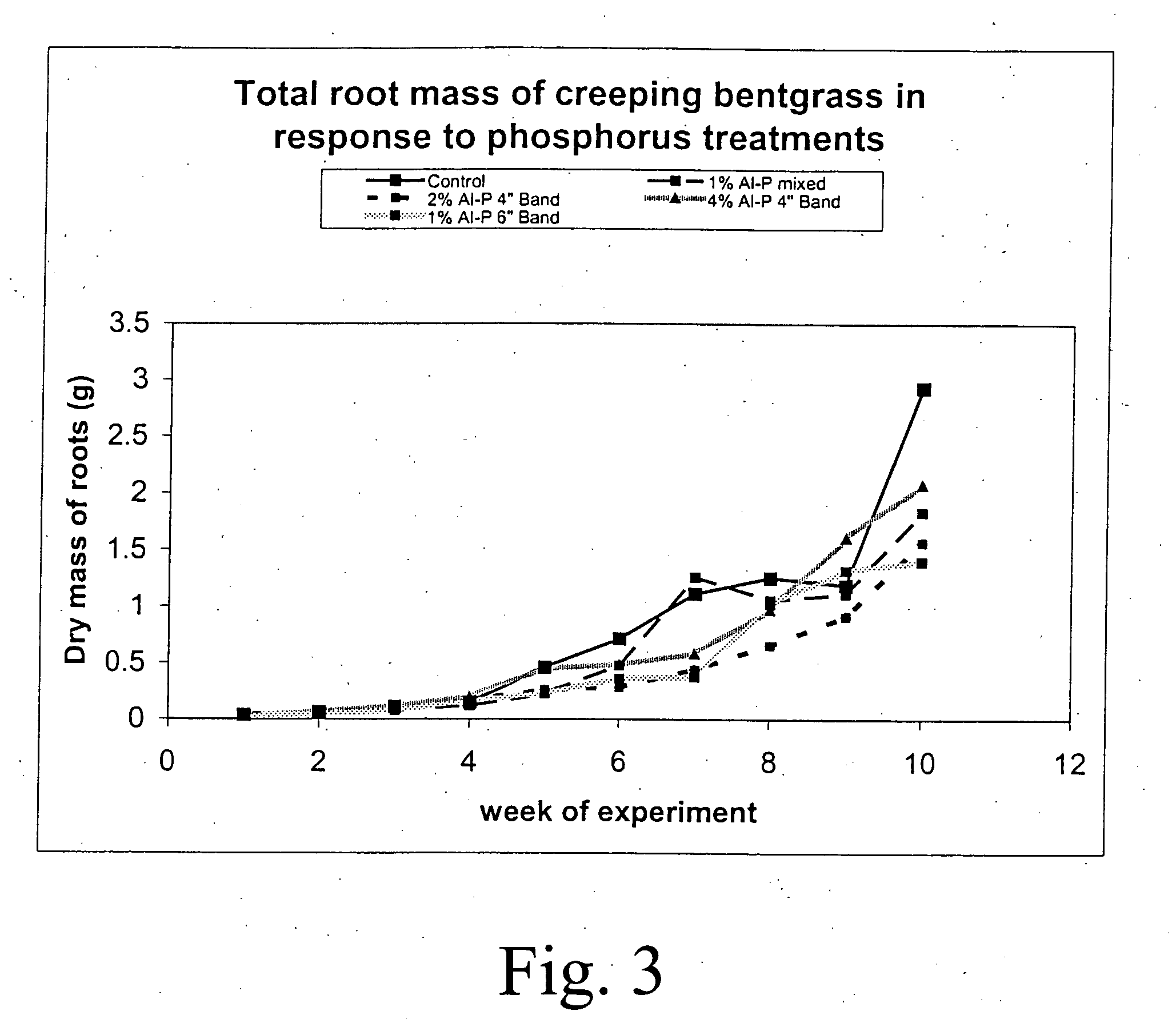Use of solid-phase buffer to improve plant cultivation
a solid-phase buffer and plant technology, applied in the field of plant fertilization system and a method, can solve the problems of increasing maintenance requirements, reducing product quality or appearance, and plant not being able to complete its life cycle, so as to facilitate root growth, minimize p leaching and runoff, and maximize plant performance
- Summary
- Abstract
- Description
- Claims
- Application Information
AI Technical Summary
Benefits of technology
Problems solved by technology
Method used
Image
Examples
example 1
Effect of Aluminum Phosphate on Phosphorus Dynamics in Turf
[0086] 1. Methodology
[0087] A. (1) Turfgrass was grown over time in a sand-culture system (pvc columns) that mimics the profile of a constructed golf course. The columns were constructed from 15-inch long sections of 4″ diameter, schedule 40 PVC pipe. A square of landscape cloth was attached to the bottom of the column with duct tape to hold the sand and gravel in the column and to permit water drainage. A 3-inch layer of pea gravel was placed in the bottom of each column to facilitate drainage.
[0088] (2) Alumina-P fertilizer buffering at 30 uM P was mixed into the sand in two applications; a homogenous mix, and a 4″ deep band starting 8″ below the surface. Only P supplied to the alumina-amended plants came directly from the alumina-P mixed into the sand.
[0089] (3) Normal fertilization (NPK) was applied as a complete nutrient solution (E. Epstein, Principles of Plant Nutrition, Academic Press, 1972) at ¼ strength for mac...
example 2
Effect of Aluminum Phosphate on Phosphorus Dynamics in Turf at Three Rates of Phosphorus Desorption
[0105] In this example, similar conditions were used as described above for Example 1, with the exception that the solid-phase buffer was applied at three rates of P desorption, and in all cases was mixed uniformly throughout the root zone. Three rates of Al—P desorption were compared with a nutrient solution lacking P, a complete nutrient solution, and a conventional industry treatment of granular compound fertilizer. Two turfgrass species were compared, the desirable Agrostis stolonifera versus the undesirable Poa annua. Turf was regularly clipped to simulate mowing. As shown in FIG. 10, establishment of the two species was strongly affected by P source. The Al—P favored growth and establishment of A. stolonifera over P. annua. Compared with conventional fertilization, Al—P, especially at the low rate of P desorption, caused a proportional reduction in growth of P. annua compared wi...
PUM
 Login to View More
Login to View More Abstract
Description
Claims
Application Information
 Login to View More
Login to View More - R&D
- Intellectual Property
- Life Sciences
- Materials
- Tech Scout
- Unparalleled Data Quality
- Higher Quality Content
- 60% Fewer Hallucinations
Browse by: Latest US Patents, China's latest patents, Technical Efficacy Thesaurus, Application Domain, Technology Topic, Popular Technical Reports.
© 2025 PatSnap. All rights reserved.Legal|Privacy policy|Modern Slavery Act Transparency Statement|Sitemap|About US| Contact US: help@patsnap.com



